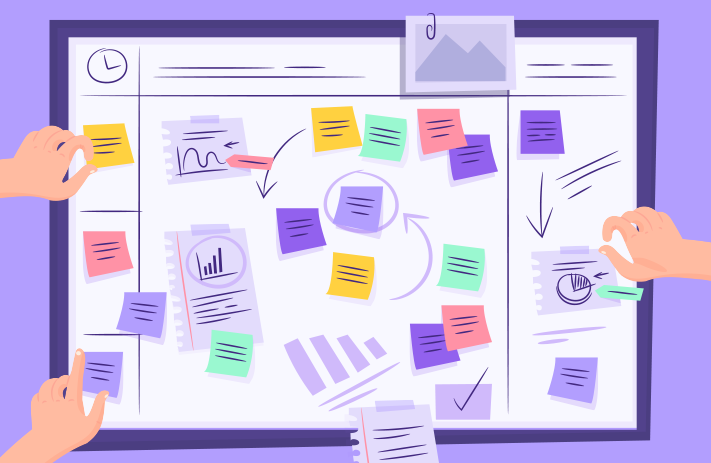14 Jul Getting Curious About Ethics By: Kellie Brungard, GPC
Ethics are moral principles that govern an individual’s or group’s behavior or activities. Within the grant profession, the Grant Professionals Association (GPA) has defined a clear code of ethics for members to abide by and establish boundaries within practice that uphold the integrity of the industry. Members of GPA or a professional association with defined codes of ethics need to understand and agree (or accept) the ethical boundaries the organization upholds. Members found to be in violation of the association’s ethics can be sanctioned with temporary or permanent suspension of membership or revocation of their credentials. While some ethical responses are intuitive, others are unclear. Below are three not-so-obvious ethical quandaries commonly encountered by organizations.24 Jun Advancing Knowledge: Knowing your “Why” by Kellie Brungard, GPC
Posted at 17:08h
in Competency Seven, GPC Credential, Grants Management, Kellie Brunguard, Professional Development, Professionalism
Have you ever stopped to consider the reasons why you sign up for webinars, attain or continue to maintain your grant professional certification (GPC), or set out to learn an entirely new skill set (like project management)? For some, an employer prioritizes professional development and encourages developing a training plan. Perhaps your certification or licensure requires continuing education. Do you ever feel like you are taking action (e.g., attending workshops or reading professional articles) but it’s not adding up? Are you missing a sense of accomplishment? Actions without a bigger picture may seem productive in the short term, but they may not connect with your larger goals or leave you feeling like you haven’t made progress. Identifying your “why” may be the missing piece.
09 Jun You CAN Evaluate Your Program! How to Conduct an Environmental Scan and Needs Analysis (Part 1 of 11) By: AGS Staff
Posted at 18:00h
in Competency Eight, Competency Five, Competency Four, Evaluation, Grants Management, Relationships
Have you been tasked with evaluating a program and don’t know where to begin? If so, you aren’t alone. Many people struggle with program evaluation. This new three-part series on evaluation will prepare you to design and implement a strong evaluation comprised of quantitative and qualitative data analysis. You will also understand how to secure a third-party evaluator, if you need one. This post focuses on how to conduct an environmental scan and needs assessment.
07 Apr Small Nonprofit Blog Series: Grantsmanship: Being a Responsible Grantee by Megan Campbell, MPA, GPC
Posted at 18:00h
in Competency Eight, Competency Five, Grants Management, Megan Campbell, Relationships
 All the time and effort you put into designing a great project and developing a clear, well-written grant proposal has paid off and you’ve received a notice of award from the funder. Now, it’s time to ensure that you are a great steward of the grant funds that you have received.
All the time and effort you put into designing a great project and developing a clear, well-written grant proposal has paid off and you’ve received a notice of award from the funder. Now, it’s time to ensure that you are a great steward of the grant funds that you have received.
10 Mar Small Nonprofit Building Block Series: Tips for Staying Organized by Megan Campbell, MPA, GPC
Staying on top of your grant projects doesn’t necessarily require fancy software or the newest technology. Data or donor management systems are excellent tools, but you only get out of them what you put in. Small organizations sometimes don’t have the staff capacity it takes to utilize all the features they offer. However, if you start organized, it’s much easier to stay organized no matter what system you are working with. Start with the basics. Set up an organized filing or record-keeping process, learn what you need (and what you don’t), and take advantage of technology-supported opportunities when the options arise. If time and cost are obstacles for your organization, here are five tips to keep it together until you have greater capacity:11 Jan Grant Stewardship: Beyond “Thank You” by Megan Campbell, MPA, GPC
Posted at 18:00h
in Competency Eight, Competency Six, Funder Relations, GPC, Grant Reporting, Grants Management, Megan Campbell, MPA, Relationships
Congratulations! You have received notice that a local foundation will gladly support your organization and/or program during the coming year. The foundation board or staff are excited about your mission, your plans, and helping serve your community. You record the amount in your donor and accounting software, generate a letter acknowledging the gift, and move on to managing the implementation of program activities. Right? Well, no.
31 Jul Did You Know? Nonprofit Organizations and Not-For-Profit Organizations Are Not the Same Thing by Roxanne Jensen, Ed.S., GPC
Posted at 12:48h
in Competency Three, Competency Two, Culture, Funding, Grant Reporting, Grants Management, Organizational Development, Roxanne Jensen, ED. SPEC.
Nonprofits and not-for-profits share many similarities and, in practice, the terms are often used interchangeably. The key similarities and differences between these types of organizations are nuanced. Nonprofits and not-for-profits are mission-driven organizations with a shared purpose of serving the public or charitable needs. They are...
11 Dec Don’t Hibernate on Grants: how to use downtime to prepare for 2023 by Kellie Brungard, GPC
This time of year starts to get a little strange between projects wrapping up for the year, the time change I still have not adjusted to, and differing work schedules for holiday plans and using up vacation time. While some like to bank their paid time off to have a full holiday break (which is fully respectable), I like to use this quieter time to work on projects that get pushed to the side during busy seasons. Here are some ways I like to use downtime to my advantage.22 Oct Falling into Grant Award Management by Kellie Brungard, GPC
October brings many wonderful things – cooler weather, changing landscape palettes, and the sound of grant professionals cheering when they receive notice of awards for federal grants. If you recently received an award, go ahead and pat yourself on the back for your hard work and dedication to ensuring the proposal was top-notch – you did it! Many of us focus on the details of project design and pulling together the long list of attachments but might not be well versed in what to do after an award is announced. Don’t worry – here are a few guidelines and resources to have you prepared faster than you can say “pumpkin spice latte.”- 1
- 2










